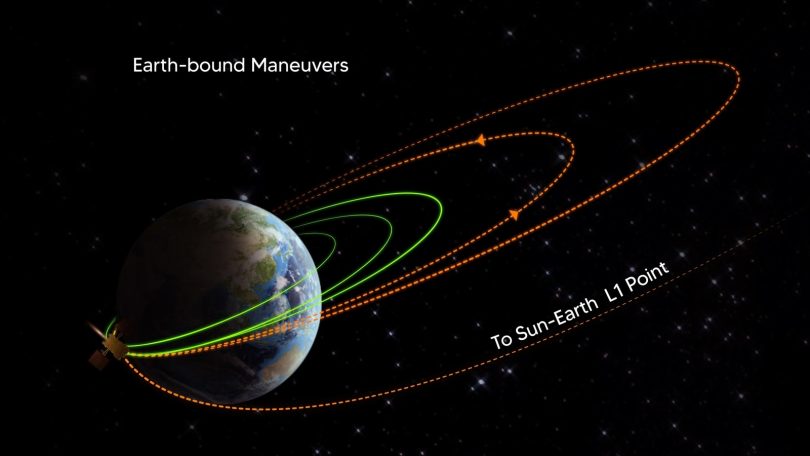[ad_1]
The Indian Space Research Organisation (ISRO) on Sunday informed Aditya L1, India’s first solar mission, has successfully performed third earth-bound manoeuvre during its journey to the Sun.

“The third Earth-bound maneuvre (EBN#3) is performed successfully from ISTRAC, Bengaluru,” the space agency posted on X.
ISRO’s ground stations at Mauritius, Bengaluru, SDSC-SHAR and Port Blair tracked the satellite during this operation, it added.
Giving information about the fourth manoeuvre, ISRO said, “The new orbit attained is 296 km x 71767 km. The next maneuvre (EBN#4) is scheduled for September 15, 2023, around 02:00 Hrs. IST.”
What are earth-bound manoeuvres?
Earth-bound manoeuvres involve the firing of rockets and some adjustments to angles, as required. How this will work can perhaps be understood by taking the example of when a person is on a swing — to make the swing go higher, a pressure (by shifting body weight) is applied in the phase when the swing is coming down towards the ground. In Aditya-L1’s case, once it gains enough velocity, it will slingshot around to its intended path towards L1.
What is L1 point?
The L1 point refers to Lagrange Point 1, where gravitational forces of celestial objects work in such a way that the spacecraft can be parked in what is known as a halo orbit – an oval that shifts on three axes. Once Aditya-L1 arrives at the L1 point, another manoeuvre will be performed to bind the craft to the orbit, the space agency said.
“The satellite spends its whole mission life orbiting around L1 in an irregularly shaped orbit in a plane roughly perpendicular to the line joining the Earth and the Sun,” an Isro document read.
The strategic placement will ensure that Aditya-L1 can continuously monitor the Sun. “This location also allows the satellite to access solar radiation and magnetic storms before they are influenced by Earth’s magnetic field and atmosphere,” the document said.
The gravitational stability at this point will also minimise the need for frequent orbital maintenance, it added.
[ad_2]
Source link








